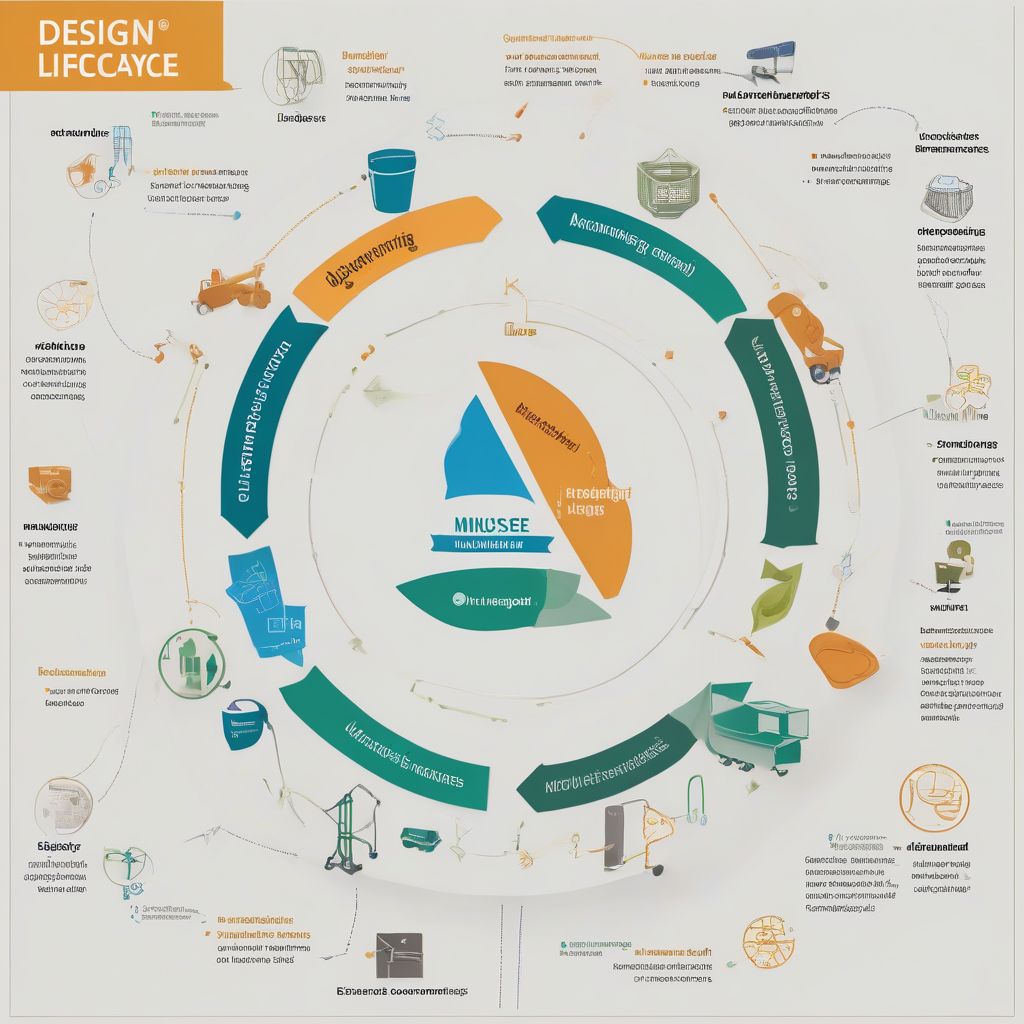Imagine a world where products are designed not for a single use, but for continuous rebirth. A world where waste is minimized, resources are conserved, and economic growth is decoupled from environmental degradation. This is the promise of the circular economy, and companies are increasingly embracing its principles to design products for circular product life cycles. But how exactly are they doing it?
Understanding the Circular Economy and Product Life Cycles
The traditional linear economy follows a “take-make-dispose” model. Resources are extracted, products are manufactured, used, and then discarded. This creates waste, depletes resources, and contributes to pollution. The circular economy, on the other hand, seeks to eliminate waste and pollution by keeping materials in use. This involves designing products for durability, repairability, reusability, remanufacturing, and recycling.
Key Principles of Circular Product Design
Several key principles guide companies in designing for circularity:
- Design for Durability: Products are built to last, using high-quality materials and robust construction.
- Design for Disassembly: Products are designed to be easily taken apart, allowing components to be reused or recycled.
- Design for Remanufacturing: Products are designed so that key components can be refurbished and used in new products.
- Design for Material Recovery: Products are designed so that materials can be easily recovered and recycled at the end of their life.
- Design for Reuse: Products are designed to be used multiple times, either by the original owner or by others.
 Circular Product Lifecycle Design
Circular Product Lifecycle Design
How Companies are Implementing Circular Product Design
Companies across various sectors are adopting innovative strategies to design for circularity:
Modular Design
Modular design allows products to be easily upgraded or repaired by replacing individual components rather than the entire product. Fairphone, a Dutch electronics company, exemplifies this approach with their modular smartphones.
Material Selection
Choosing sustainable and recyclable materials is crucial. Companies are increasingly using recycled plastics, bio-based materials, and materials with high recyclability rates.
Product-as-a-Service
This business model shifts ownership from the consumer to the company. Instead of selling a product outright, companies offer a service that includes maintenance, repair, and eventual product take-back. This incentivizes companies to design durable and easily repairable products. Interface, a flooring company, offers flooring-as-a-service, taking responsibility for the entire lifecycle of their products.
Closed-Loop Systems
Companies are creating closed-loop systems where waste from one process becomes the input for another. For example, a clothing company might collect old clothes to recycle them into new fibers.
Collaboration and Partnerships
Circular economy initiatives often require collaboration across the value chain. Companies are partnering with suppliers, recyclers, and other stakeholders to create closed-loop systems.
Benefits of Circular Product Design
Designing for circularity offers numerous advantages:
- Reduced Environmental Impact: Less waste, lower emissions, and reduced resource depletion.
- Cost Savings: Reduced material costs and waste disposal fees.
- Enhanced Brand Reputation: Consumers are increasingly conscious of sustainability and prefer brands that prioritize it.
- New Revenue Streams: Circular business models can create new revenue opportunities.
- Increased Resilience: Reduced dependence on virgin resources makes companies less vulnerable to supply chain disruptions.
Examples of Companies Designing for Circularity
- Patagonia: Known for their commitment to repairing and recycling their outdoor apparel.
- IKEA: Exploring furniture leasing and incorporating recycled materials into their products.
- Dell: Using recycled plastics in their computers and offering take-back programs.
- Loop Platform: A reusable packaging platform enabling brands to offer products in durable, refillable containers.
Challenges and Opportunities
While the circular economy offers significant potential, companies face several challenges in implementing circular product design:
- Cost of Transition: Investing in new technologies and processes can be expensive.
- Lack of Infrastructure: Recycling infrastructure and collection systems may be inadequate.
- Consumer Behavior: Consumer adoption of circular products and services is crucial for success.
However, these challenges also present opportunities for innovation and growth. Companies that can overcome these hurdles will be well-positioned to thrive in the circular economy.
Conclusion
The shift towards circular product life cycles is not just a trend; it’s a fundamental change in how we design, produce, and consume products. Companies that embrace circularity are not only reducing their environmental impact but also creating new business opportunities and enhancing their brand reputation. By prioritizing durability, repairability, reusability, and recyclability, companies are building a more sustainable and resilient future. This journey requires collaboration, innovation, and a commitment to long-term value creation. What are your thoughts on the circular economy? Share your ideas and experiences in the comments below, and let’s continue the conversation!



